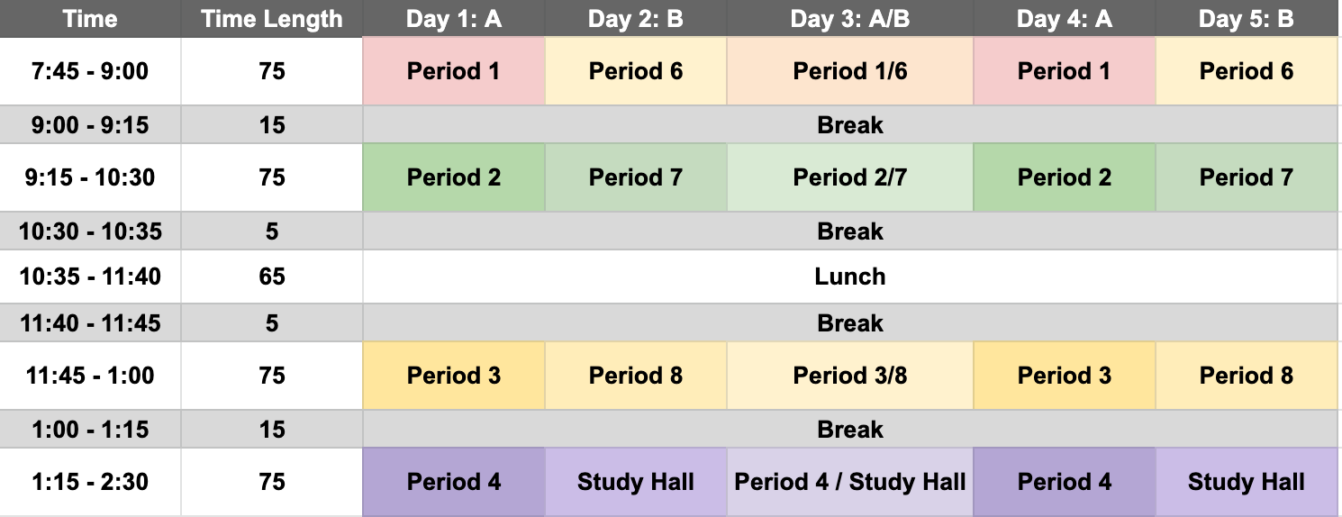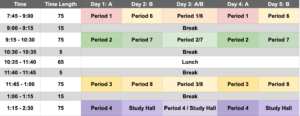In Our Words: Sherwood Should Adopt a Block Schedule

As MCPS transitions to what will ideally be a full in-person school year next fall, Sherwood must reconsider its traditional seven-period schedule. After a year of block scheduling and one asynchronous day each week, students have adjusted to longer class periods, longer breaks between classes, and longer deadlines.
The following schedule should be considered by the Sherwood administration for the 2021-2022 school year:

Classes that are 75 minutes in length would allow students and teachers to accomplish more in each class while allotting for an extended lunch and class changes. To ensure that classes have uniform instruction time over the year, Wednesdays would alternate between “A” and “B” days each week.
Additionally, study halls on B days would allow students to complete assignments while still at school, so busy days filled with sports, jobs, and extracurricular activities are not concluded with hours of homework each night.
Although the provided schedule has less class time throughout the school year than the traditional seven-period schedule, students and teachers have adjusted to significantly less class time over the pandemic. Instead, this schedule would benefit students’ mental health by helping them ease into in-person learning again with more time to complete assignments and see teachers (and friends) throughout the school day.
Some would make the reasonable argument that a “return to normalcy” is a return to a schedule of seven classes per day, each for 47 minutes. However, while shorter classes are likely to maintain stimulation and engagement for some students throughout the day, this schedule of the past has serious flaws, the foremost one being that instruction and learning are rushed. The longer breaks and lunch period do raise some safety and security concerns; however, students had little time to talk with teachers before or after class and attend club meetings or other school functions during the 5-minute breaks and 36-minute lunch period.
Oftentimes, students would have to eat during class or skip lunch altogether to keep up with the demands of a rigorous schedule. Also, completing homework for seven classes each night was a burden on many students, especially those who have responsibilities such as extracurriculars or work. This transition back into the building is an opportunity for the Sherwood administration to improve the school’s educational approach rather than settling back into the old routine.